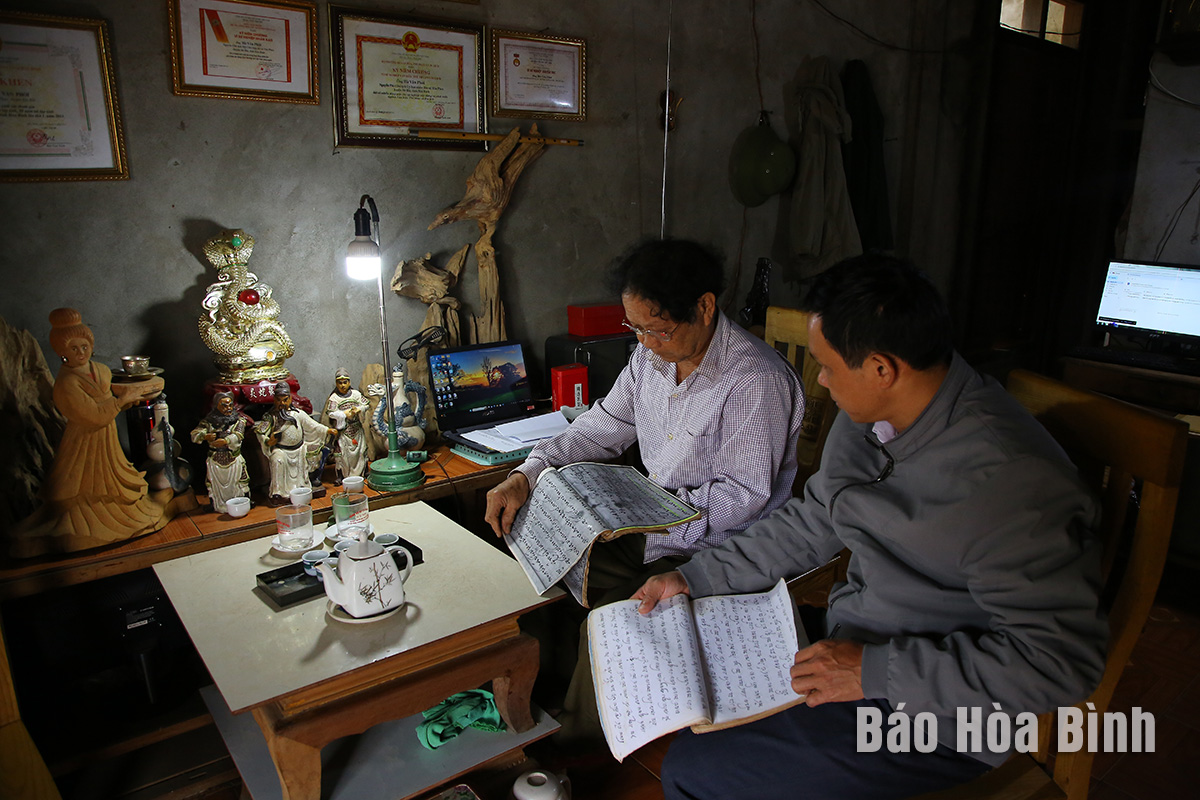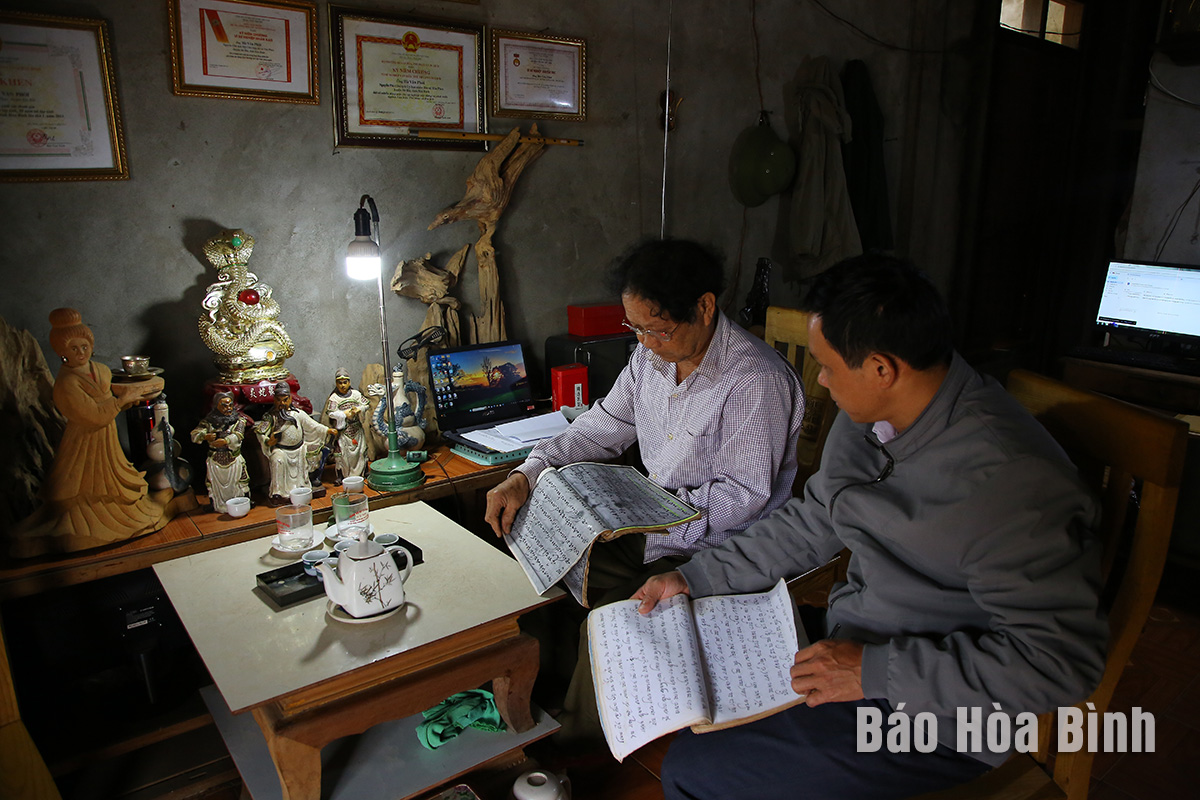
Tan Pheo commune in Da Bac district has been long inhabited by people of several ethnic minority groups such as Tay, Dao and Muong. Each ethnic group has its own culture and unique customs during Tet. For the Tay people, although life has changed a lot, their cultural identity and customs of celebrating the Lunar New Year are still preserved and passed down.

Ha Van Phoi (sitting inside) in Tan
Pheo commune (Da Bac) knows and preserves many traditional cultural values of
the Tay ethnic group in the locality.
Ha Van Phoi, who knows many traditional
cultural features of the Tay ethnic group, shared that the Lunar New Year is
the most important and biggest festival in a year of the Tay people. Their
custom of welcoming Tet includes two stages: "het khau mo" which
means the new rice celebration, and "het set – het chieng" which
means the custom of welcoming the Lunar New Year, and is prepared from the last
lunar month. The new rice and Lunar New Year celebrations start in the period
from the first to the third day of January. The worshiping part usually has two
rites: worshiping ancestors and worshiping the Land Genie and those who govern
and look after the place where the family lives, with a hope that the ancestors
and genies will help protect the family.
On the morning of the first day of the
lunar new year, the Tay people have the custom of waking up early and going to
the garden to pick the greenest and freshest leaves to bring home with the
belief that they will bring lots of fortune and luck in the new year. Going to
a neighbour's house, they will wear white to bring luck and ward off bad luck.
The new rice celebration has been preserved
to this day. October is the month of rice harvest, families are happy because
the hardships of the between-crop months are over. They use new rice to worship
their ancestors.
Ha Van Le, Vice Chairman of the Tan Pheo
commune People's Committee, said that the Tay ethnic group accounts for 74% of
the commune’s population. The Tay people have many unique cultural features
such as their own language and writing, customs and practices during holidays,
Tet, weddings and funerals. Their costumes and houses are also made in their
own style.
Gongs hold a special place in the cultural and spiritual life of the Muong ethnic people in Hoa Binh province. More than musical instruments, they are an indispensable part of community rituals and collective memory, echoing through generations as a spiritual thread linking the past, present, and future.
Preserving and promoting the cultural values of the Muong ethnic group has become an urgent task in the current context, as many traditional values face the risk of fading away. This effort requires not only protecting the cultural identity but also eliminating outdated customs and developing a modern cultural lifestyle, contributing to sustainable values for the Muong community in Hoa Binh province.
The Muong ethnic culture, deeply rooted in Vietnam’s mountainous north, continues to be preserved and revitalised by dedicated individuals and communities determined to safeguard their ancestral identity.
The Muong group is one of the largest ethnic minorities in Vietnam, primarily found in Hoa Binh province. The Muong people in Hoa Binh boast a rich and diverse cultural treasure that reflects the unique identity of this ethnic group. Accounting for over 63% of the province's population, they have created and preserved numerous distinctive cultural values, contributing to their unique identity. Their cultural heritage is an invaluable asset, at the heart of their national identity, and represents a vibrant spiritual life that must be preserved and promoted in today’s modern world.
For generations, the ethnic communities of Hoa Binh province, particularly the Muong people, have preserved vibrant festivals deeply intertwined with the region’s geography, nature, and social traditions. These celebrations enrich Hoa Binh’s spiritual life and cultural identity, reflecting both folk beliefs and the intermingling of ethnic customs. Many of these festivals have endured the test of time, passed down through generations and continuing to thrive today. Among them, the Khai Ha (Going Down to the Field) festival stands out as one of the most significant events of the Muong ethnic group.
Muong calendar, known as sach doi, is an ancient folk knowledge system developed through observations of the movement of the pleiades star. This unique calendar consists of 12 bamboo sticks, each representing a lunar month. Specific days within each month are marked with distinct symbols, guiding locals in determining auspicious and inauspicious days for important activities.



